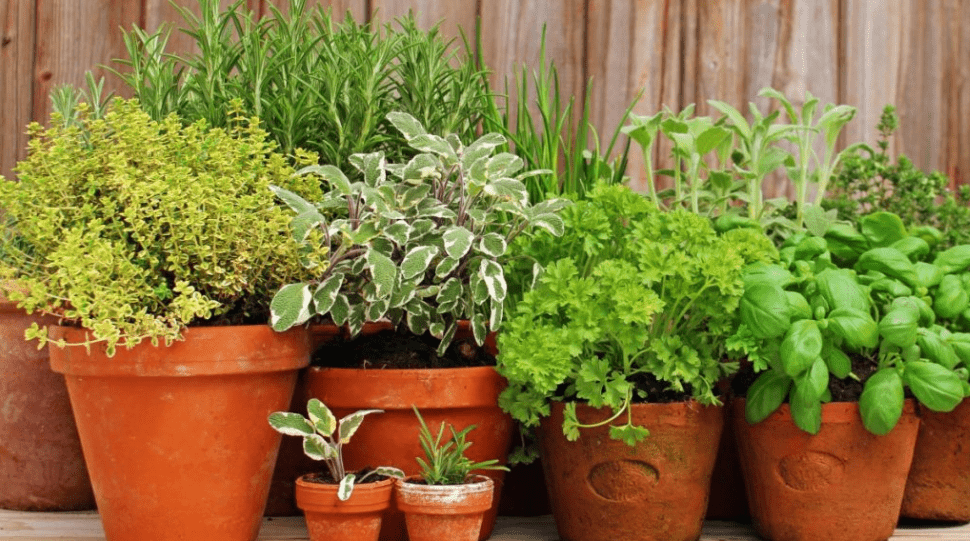
Herbs Container Gardening: A Beginner’s Guide to Growing Fresh Herbs at Home
Are you looking to add fresh, aromatic flavors to your cooking while saving money and space? Herbs container gardening is the perfect solution for beginners and seasoned gardeners alike. This guide will walk you through everything you need to know to successfully grow your own herbs in containers, whether you have a sprawling backyard or just a small apartment balcony.
Table of Contents
ToggleGetting Started with Herbs Container Gardening
A. Understanding the Basics
1. What is container gardening?
Container gardening is a method of growing plants in containers rather than directly in the ground. This allows for greater flexibility and convenience, especially for those with limited space or no access to a traditional garden plot.
2. Advantages of container gardening for herbs (mobility, space-saving, control over growing conditions)
Container gardening offers several advantages for growing herbs, including mobility, space-saving, and control over growing conditions. With containers, you have the flexibility to move your herbs to different locations, saving space and maximizing sunlight exposure. It also allows you to control the soil, water, and drainage for optimal growing conditions, making it an ideal choice for both beginners and seasoned gardeners.
B. Choosing the Right Containers
1. Types of containers (pots, planters, hanging baskets)
When choosing containers for your herb garden, there are several options to consider. Pots, planters, and hanging baskets are all popular choices for container gardening. Pots are versatile and come in various sizes, making them suitable for different herbs. Planters are larger and can accommodate multiple herbs, while hanging baskets are great for vertical gardening and saving space. Consider the size, material, and drainage of the container to ensure the best growing conditions for your herbs.
Traditional clay pots
Traditional clay pots are a classic choice for herb gardening, as they allow for good airflow and drainage. However, they can dry out quickly and will need more frequent watering. Plastic pots are lightweight and retain moisture well, making them a good option for herbs that prefer consistently moist soil. Another option is fabric grow bags, which provide excellent drainage and air circulation, preventing root rot and other issues. Ultimately, the type of container you choose will depend on the specific needs of the herbs you are growing and your own gardening preferences.
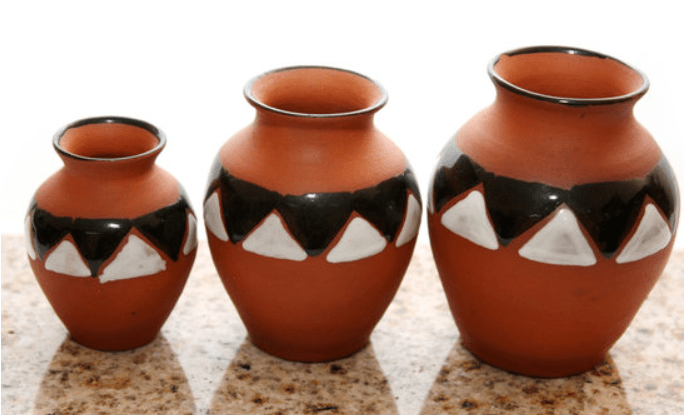
Plastic and resin containers
Plastic and resin containers are a durable and lightweight option for herb gardening. They come in a variety of sizes and shapes, making them suitable for different herbs. They also retain moisture well, reducing the need for frequent watering. However, it’s important to ensure that they have proper drainage to prevent waterlogged soil. Some plastic and resin containers also come with built-in self-watering systems, making them a convenient option for busy gardeners. Overall, plastic and resin containers are a versatile and low-maintenance choice for growing herbs.
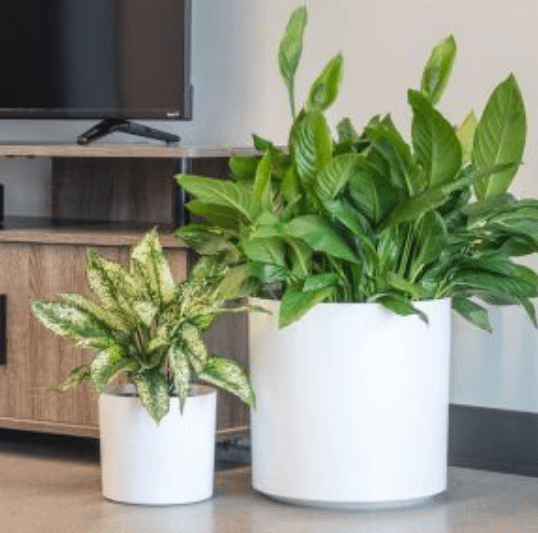
Ceramic pots
Ceramic pots are a popular choice for herb gardening due to their natural aesthetics and ability to retain moisture. They come in a wide range of designs and colors, allowing for customization to fit your personal style. However, it’s important to note that ceramic pots are heavier and more fragile than plastic and resin containers. They also require more frequent watering due to their porous nature. Despite this, many gardeners prefer ceramic pots for their attractive appearance and ability to keep herbs healthy and thriving.
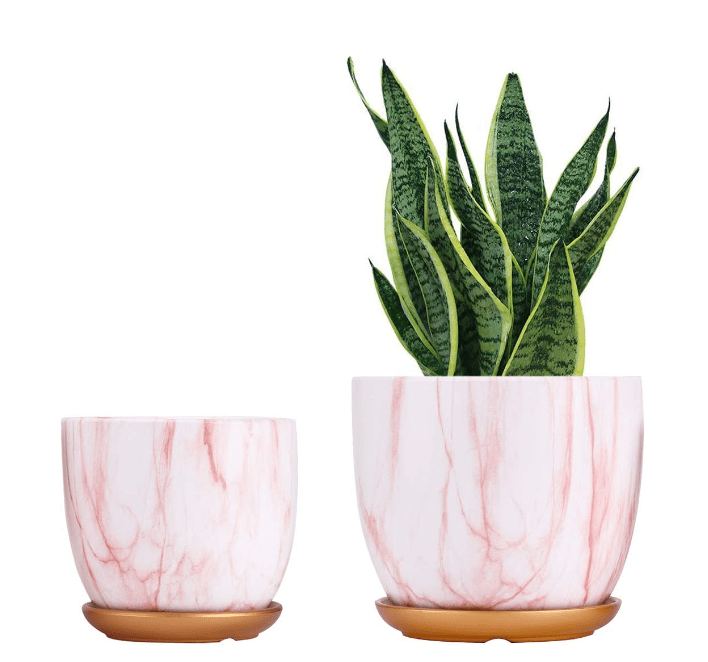
Fabric pots
Fabric pots are a lightweight and breathable option for herb gardening. They are made from durable, breathable fabric that allows for air pruning of the roots, preventing them from becoming root-bound. This promotes healthy root growth and overall plant health. Fabric pots are also portable and easy to store, making them a convenient choice for gardeners with limited space. However, it’s important to note that fabric pots may dry out more quickly than other types of containers, so they require more frequent watering. Overall, fabric pots are a great choice for gardeners looking for a sustainable and breathable option for growing herbs.
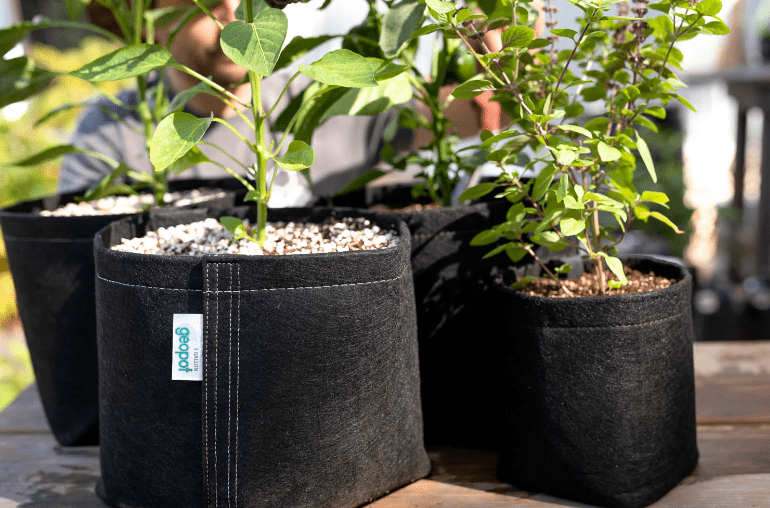
2. Size and material considerations
When choosing a pot for growing herbs, it’s important to consider the size and material of the pot. The size of the pot should be large enough to accommodate the root system of the herb plant, allowing for proper growth and development. Additionally, the material of the pot can impact the health and growth of the herbs. Ceramic pots are a popular choice for their attractive appearance and ability to keep herbs healthy and thriving. However, fabric pots are a lightweight and breathable option that promotes healthy root growth. Ultimately, the best pot for growing herbs will depend on the specific needs and preferences of the gardener.
3. Importance of drainage
Proper drainage is crucial for the health and growth of herb plants. Without adequate drainage, excess water can accumulate in the soil and lead to root rot, which can ultimately kill the plant. Fabric pots are an excellent choice for promoting good drainage, as the breathable material allows excess water to evaporate and prevents waterlogged soil. This helps to maintain the optimal moisture levels for herb plants, allowing them to thrive and flourish. It’s important for gardeners to ensure that their pots have adequate drainage holes to prevent water from pooling at the bottom and causing damage to the roots.
B. Easy-to-grow herbs for beginners
Easy-to-grow herbs for beginners include basil, mint, cilantro, and parsley. These herbs are relatively low maintenance and can be grown in a variety of conditions, making them perfect for novice gardeners. They also have a wide range of culinary uses, making them a popular choice for home cooks. Additionally, these herbs can be grown in pots both indoors and outdoors, making them accessible to individuals with limited gardening space. With proper care and attention, these herbs are sure to thrive and provide a bountiful harvest for beginners.
1.Herbs suited for indoor vs. outdoor containers
Herbs that are well-suited for indoor containers include basil, cilantro, and mint, as they prefer warm temperatures and can thrive in a sunny indoor location. Herbs that are well-suited for outdoor containers include parsley, chives, and thyme, as they prefer cooler temperatures and can thrive in an outdoor garden environment. It’s important to consider the specific needs of each herb when deciding whether to grow them indoors or outdoors in containers.
Preparing for Planting
A. Choosing the Right Soil
When preparing to plant herbs in containers, it’s important to choose the right soil. Using a high-quality, well-draining potting mix is essential for the health and growth of your herbs. Look for a mix specifically designed for container gardening, as it will provide the right balance of nutrients and aeration for your herbs.
1. Potting soil vs. garden soil
Potting soil is a better choice for growing herbs in containers because it is specifically formulated for use in containers. It provides the right balance of nutrients and aeration that herbs need to thrive in a confined space. Garden soil may be too dense and not provide the proper drainage for container-grown herbs.
2.Soil amendments (compost, perlite, vermiculite)
Adding soil amendments such as compost, perlite, or vermiculite to your potting mix can further improve the quality of the soil for your herbs. Compost adds nutrients and improves soil structure, while perlite and vermiculite help with drainage and aeration. Mixing in these amendments can help create an ideal growing environment for your herbs in containers.
B. Location and Light Requirements
When growing herbs in containers, it’s important to consider their location and light requirements. Most herbs prefer full sun, so placing your containers in a sunny spot with at least 6-8 hours of sunlight per day is ideal. If you’re growing herbs indoors, make sure to place them near a south-facing window or use grow lights to provide the necessary light. Proper lighting is crucial for healthy herb growth and a bountiful harvest.
1. Finding the right spot (indoor and outdoor)
When growing herbs in containers, it’s important to find the right spot for them to thrive. For outdoor containers, choose a sunny location with at least 6-8 hours of sunlight per day. Indoors, place your containers near a south-facing window to ensure they get enough light, or use grow lights to supplement. Proper lighting is essential for healthy herb growth and a successful harvest.
2. Full sun vs. partial shade
Most herbs prefer full sun, which means they need at least 6-8 hours of direct sunlight per day to thrive. However, some herbs, like mint and parsley, can tolerate partial shade and may even benefit from some relief from intense afternoon sun. It’s important to know the specific light requirements of each herb you’re growing and adjust your planting location accordingly.
C. Watering and Maintenance
When it comes to watering, herbs generally prefer well-draining soil and even moisture. It’s important to water the plants when the top inch of soil feels dry to the touch, but be careful not to overwater as this can lead to root rot. Additionally, regular grooming and maintenance, such as pruning and removing any dead or yellowing leaves, can help promote healthy growth and prevent diseases. Taking the time to properly care for your herbs will ensure a bountiful harvest and flavorful results in your cooking.
Planting Your Herbs
A. Starting from Seeds vs. Seedlings
When planting herbs, you have the option to start from seeds or seedlings. Starting from seeds allows you to have a wider variety of herbs to choose from, but it requires more time and attention to ensure successful germination. On the other hand, starting from seedlings is a quicker and more convenient option, as the plants are already established and ready to be transplanted into your garden. Consider your level of experience and the time you want to commit to gardening when deciding which option is best for you.
1. How to plant seeds and seedlings in containers
To plant seeds in containers, fill the container with potting mix, sprinkle the seeds on top, and lightly cover them with a thin layer of soil. Water the soil gently and keep it moist until the seeds germinate. For seedlings, simply dig a small hole in the potting mix, place the seedling in the hole, and gently pat the soil around the base of the plant. Water the seedling well and keep the soil moist as the plant establishes itself. Make sure the containers have proper drainage to avoid waterlogging the soil.
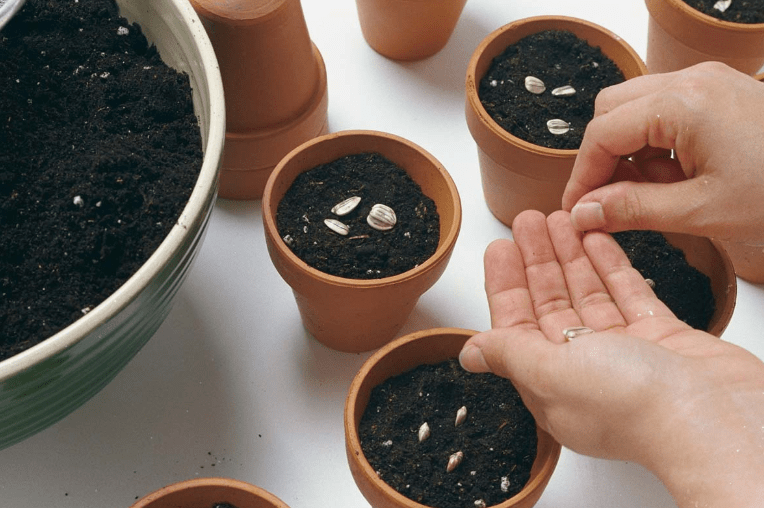
B. Transplanting Herbs
To transplant herbs, choose a container that is larger than the current pot the herb is in. Gently loosen the roots of the herb and carefully remove it from its original pot. Place the herb in the center of the new container and fill in the empty space with potting mix. Water the herb well after transplanting and keep the soil moist as the plant adjusts to its new environment. Consider the size of the herb and its root system when choosing a new container to ensure it has enough space to grow.
C. Fertilizing Your Herb Garden
To fertilize your herb garden, it’s important to choose a fertilizer that is specifically formulated for herbs. You can opt for an organic or synthetic fertilizer, depending on your personal preference. Follow the instructions on the fertilizer packaging for proper application. Typically, you’ll want to apply the fertilizer to the soil around the base of the herbs and water thoroughly afterwards. Be careful not to over-fertilize, as this can harm the plants. It’s best to fertilize herbs in the spring or early summer when they are actively growing. And always remember to read and follow the instructions on the fertilizer packaging for best results.
Caring for Your Herb Garden
A. Pruning and Harvesting
When it comes to caring for your herb garden, pruning and harvesting are important tasks to keep in mind. Regular pruning helps to promote healthy growth and prevent overcrowding, while harvesting your herbs at the right time ensures that you’ll have fresh, flavorful herbs to use in your cooking. For best results, research the specific pruning and harvesting techniques for each herb in your garden, as they can vary. As a general rule, it’s best to prune herbs in the morning when they are at their most flavorful and to harvest them before they flower for the best flavor. And always remember to use sharp, clean garden shears to ensure a clean cut and promote healthy growth.
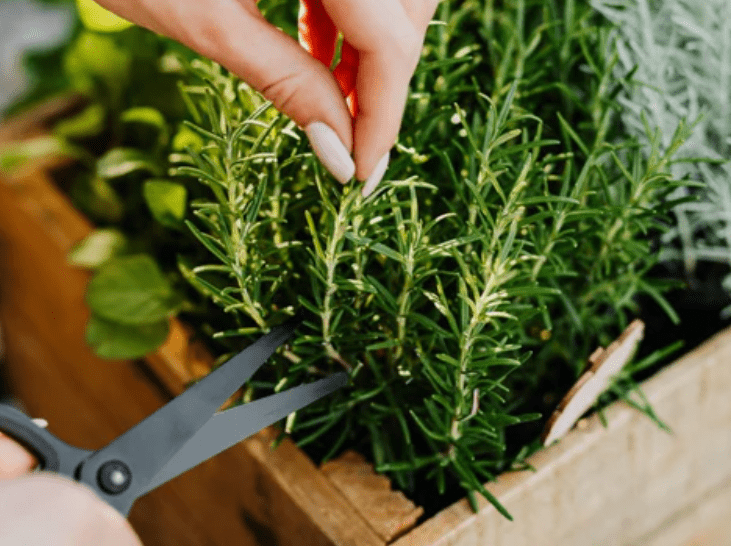
B. Dealing with Pests and Diseases
Another important aspect of caring for your herb garden is dealing with pests and diseases. Regularly inspect your plants for any signs of pests such as aphids, mites, or caterpillars, and take action to remove them if necessary. There are various organic and natural methods to control pests, such as using insecticidal soap or neem oil. It’s also crucial to keep an eye out for any signs of disease, such as powdery mildew or leaf spot, and take steps to address the issue before it spreads to other plants. Proper watering, good air circulation, and a well-maintained garden can help prevent pest and disease problems. And always be sure to remove any affected plant parts and dispose of them properly to prevent further spread. By staying vigilant and proactive, you can keep your herb garden healthy and thriving.
C. Seasonal Care Tips
In addition to regular care, it’s important to adjust your herb garden care routine based on the changing seasons. During the warmer months, make sure to water your herbs more frequently as the soil tends to dry out faster. Also, consider adding a layer of mulch around your plants to help retain moisture and regulate the temperature of the soil.
During the colder months, you may need to protect your herbs from frost by covering them with a cloth or plastic sheet. You can also consider bringing potted herbs indoors to protect them from the harsh winter conditions.
Regularly inspect your plants for any signs of pests such as aphids, mites, or caterpillars, and take action to remove them if necessary. There are various organic and natural methods to control pests, such as using insecticidal soap or neem oil.
It’s also crucial to keep an eye out for any signs of disease, such as powdery mildew or leaf spot, and take steps to address the issue before it spreads to other plants. Proper watering, good air circulation, and a well-maintained garden can help prevent pest and disease problems. And always be sure to remove any affected plant parts and dispose of them properly to prevent further spread.
By staying vigilant and proactive, you can keep your herb garden healthy and thriving throughout the changing seasons.
Importance and benefits of growing herbs at home
A. Freshness and flavor enhancement
Growing herbs at home ensures that you have access to fresh and flavorful herbs whenever you need them. This can greatly enhance the taste of your dishes and eliminate the need for store-bought herbs that may not be as fresh.
B. Cost savings
Growing herbs at home can also save you money, as store-bought herbs can be quite expensive. By growing your own, you can have a constant supply of fresh herbs without the added cost.
C. Space-saving
Container gardening allows you to grow herbs in a small space, making it perfect for those with limited space such as apartment dwellers. You can place your containers on a sunny windowsill, balcony, or even a small patio.
D. Health benefits
Fresh herbs are not only flavorful but also packed with nutrients and health benefits. Having access to homegrown herbs can encourage you to incorporate them into your cooking and improve your overall health.
Overall, growing herbs in containers at home can be a rewarding and practical way to enhance your cooking while enjoying the many benefits of gardening.
In conclusion, container gardening is a great way to grow fresh herbs at home, even if you have limited space. It’s a beginner-friendly way to enjoy the benefits of growing your own herbs, such as having access to fresh ingredients for cooking and the satisfaction of growing your own plants. With the right care and attention, you can create a thriving herb garden right on your windowsill or balcony. So, if you’re interested in starting your own herb garden, be sure to check out our beginner’s guide for all the tips and tricks you need to get started.
Frequently Asked Questions (FAQs)
Some of the best herbs to grow in a container garden include basil, mint, parsley, cilantro, chives, and thyme. These herbs are easy to grow and can thrive in a small space.
It’s best to use containers that have good drainage, such as pots with drainage holes or self-watering containers. This will prevent waterlogged soil and root rot.
Yes, many herbs can be grown indoors as long as they receive enough sunlight. Place your herb containers near a sunny window or use grow lights to provide the necessary light for their growth.
It’s important to keep the soil evenly moist, but not waterlogged. Check the soil regularly and water when the top inch feels dry to the touch. Be mindful not to overwater, as this can lead to root rot.
Herbs generally don’t require a lot of fertilizer, but you can use a balanced, water-soluble fertilizer every 4-6 weeks during the growing season to promote healthy growth.
Yes, you can plant different herbs together in the same container, but make sure to consider their individual growing requirements such as sunlight, water, and space. Some herbs may outcompete others, so it’s best to do some research on companion planting.
When harvesting herbs, it’s best to snip the leaves or stems with sharp, clean scissors or pruning shears. Harvest from the top of the plant to encourage new growth, and be mindful not to take more than one-third of the plant at a time.
Some common pests that can affect herb plants include aphids, spider mites, and whiteflies. Keeping your plants healthy and inspecting them regularly can help prevent pest infestations. Diseases such as powdery mildew and root rot can also occur, so be sure to provide good air circulation and proper watering practices to prevent these issues.
